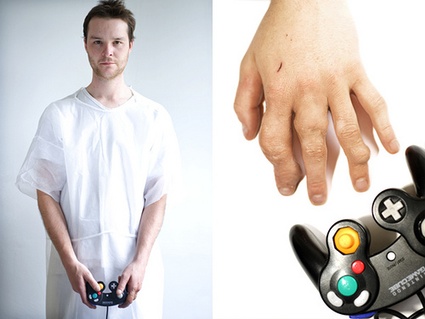 Matteo Bittanti and IOCOSE, Game Arthritis, 2011
Matteo Bittanti and IOCOSE, Game Arthritis, 2011
Matteo Bittanti and Domenico Quaranta, the authors of the very enjoyable and clever book GameScenes. Art in the Age of Videogames, are onto great game art adventures again. This time, they curated an exhibition that celebrates the work of Italian artists who have been experimenting with game-based technologies for more than two decades. The retrospective is heralded as an alternative to the Italian Pavilion at the Venice Biennale –which content Adrian Searle has compared to a tour of Silvio Berlusconi’s brain— and its title is as provocative as it can get: ITALIANS DO IT BETTER!! While some of the names of the artists selected in the show might be new to many of you, the work of others has traveled beyond the frontiers of Italy, and in some cases has even reached far beyond the world of art games itself.
Because i make it my duty to attend as few art openings as possible and because i’m a creature from the North who finds Summer temperatures in Venice to be unbearable, i won’t be able to visit and report on the show before October. But the exhibition looks so good that i decided to go ahead and ask Domenico Quaranta to tell us what we can expect from ITALIANS DO IT BETTER!!
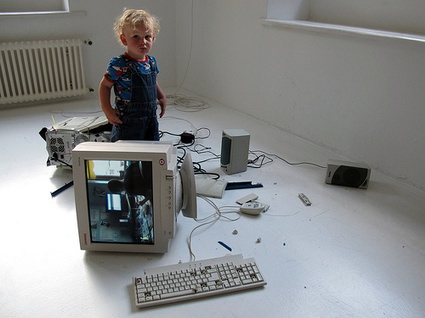 Eva and Franco Mattes aka 0100101110101101.ORG, My Generation, 2010
Eva and Franco Mattes aka 0100101110101101.ORG, My Generation, 2010
 Eva and Franco Mattes aka 0100101110101101.ORG, My Generation, 2010
Eva and Franco Mattes aka 0100101110101101.ORG, My Generation, 2010
Hi Domenico! Let’s start with the title of the exhibition because i can’t let you get away with a title like that without a word of explanation. How dared you?
Ah ah! To answer this question, I have to tell you why I enjoy so much to work with Matteo Bittanti. First, he is a good friend. Second, we have a pretty different perspective. Matteo is interested in art, sometimes he even acts as an artist himself; but he is much more into games. He debuted as a reviewer for game magazines, and he is now one of the most acclaimed game students around. I’m interested in games, even if I’m not a hardcore gamer, but I’m much more into art. As Italians often working abroad, we both have to confront ourselves with several commonplaces. I’m not just talking about that Jersey Shore kind of stuff. If you work in the games world, you know that Italy has a weak game industry, that has never been able to produce something relevant not only internationally, but even for its own local audience. Italians interested in working on games usually leave for other countries.
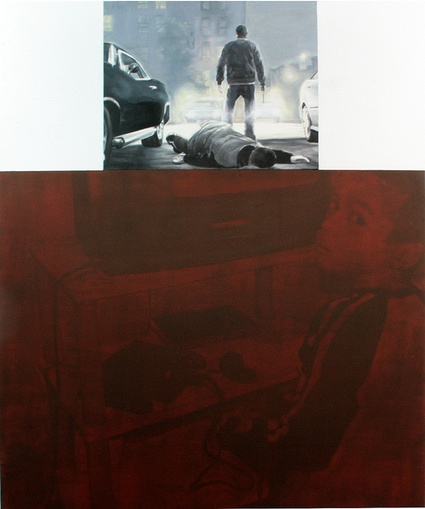 Stefano Spera, Grand Theft Auto, 2009
Stefano Spera, Grand Theft Auto, 2009
If you are working in the art world, you know that Italy has a weak art system, unable to support the artists working here on the international platform. The absence of Italian representatives in some key international events doesn’t even become news anymore.
Notwithstanding this, sometimes Italians do well anyway. When it happens, it’s always surprising, because not everybody would be able to do that well in spite of so many political, economic and cultural limitations. This is of course another commonplace: institutionally weak, we seem to be very good in DIY.
Discussing the show, we realized that the contribution that our artists brought to the international debate around videogames is much more relevant than what our weak art system, our weak game industry, our retrograde art schools, and the immaturity of the same debate in the Italian academia (and on the Italian media), would let you imagine.
Wanting to make this visible, we decided to deliver the message in a blatant, outrageous way. To be aggressive, and make some noise. To fight a commonplace you need a stock phrase. Matteo proposed to call the show “Teh Italians do it Bettah!!”. We moved back from jargon to plain English to make it easier for anybody. Matteo kept the original title for his catalogue text.
The title seemed to match with many other things: the recent involution of our international reputation. The nightmare of the Italian Pavilion in the Venice Biennale. The celebrations for the 150 years from the unification of a nation that somebody called “a geographical abstraction”. The fact that many artists in the show – and Matteo himself – actually live and work abroad. And the fact that most of them hate the title :-)
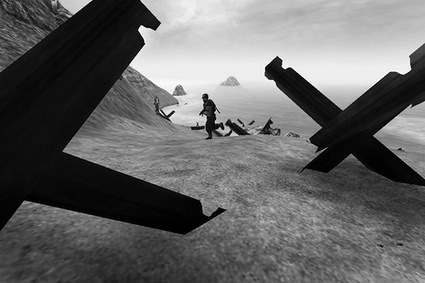 Marco Cadioli, ARENAE (D‐Day, Omaha Beach), 2005
Marco Cadioli, ARENAE (D‐Day, Omaha Beach), 2005
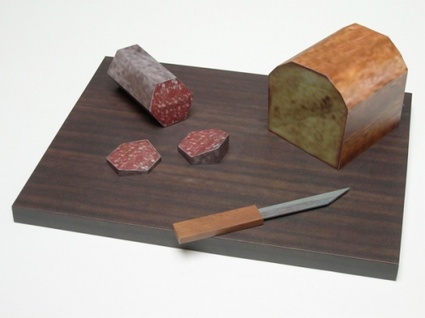 Damiano Colacito, Cold meal power-up, 2006
Damiano Colacito, Cold meal power-up, 2006
I couldn’t see which artworks were selected (only the name of the artists) so i have to ask you whether what you attempted with this show was to demonstrate how broad the range of Italian video art game is or whether you were rather trying to highlight something they have in common?
The show is as dumb as the title we chose for it. We selected fifteen artists / works that have a little in common except their passport and the interest in videogames as a cultural form. The exhibition space was just a bunch of square meters, so we decided to fill it up without caring about the dialogue between the works. Some of them are whispering love to each other, some others are enjoying a flame war session. It’s more like a salon or a fair booth: we want to sell “Italian Game Art” to the international audience of the Venice Biennale. We are waiting for some better images, but in the meantime you may enjoy my Flickr set.
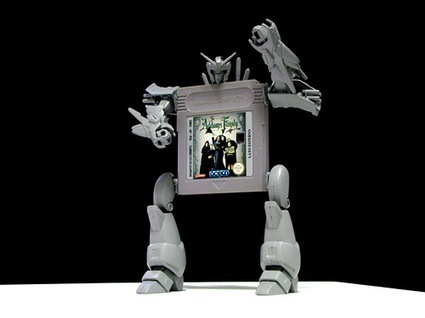 Mauro Ceolin, Hi I am Maryam Muhammed from Libya, 2008. Gameboy cartridge (Addams Family) with a 1:144 Gundam plastic
Mauro Ceolin, Hi I am Maryam Muhammed from Libya, 2008. Gameboy cartridge (Addams Family) with a 1:144 Gundam plastic
By the way, is there something that makes Italian video art game different from art games from the rest of the world? The press release for the exhibition states: ITALIANS DO IT BETTER!! thus asks “What does it mean to be an ‘Italian’ artist working with video-games, today?” Do you have some kind of answer to that question?
No, except for what I told you above. I don’t even know what it means to be Italian. A national identity is not, for me, a fixed concept. It’s an abstract idea that should be always negotiated. Institutions usually take care of restoring it, protecting it from the attacks of internal and external forces. Somebody said: “We made Italy, now let’s make Italians”. Today, nobody is working on this anymore. We did what an Italian cultural institution should do, claiming the contribution of our artists to a given field of culture. But we did it without the rhetoric of an institution, and with all the irony that being freelance curators playing the role of a phantom institution allowed us to use.
The artists included in the exhibition are Italians by chance. Many of them are not even living in Italy. They are not a group, and they didn’t learn what they do at school. They just share a common interest in videogames. They can’t even be described as “game artists”. If the term Game Art can still make some sense as a category (and I’m not completely sure about it), the term “game artist” doesn’t make sense at all. It’s not a matter of identity, it’s just a matter of cultural interests and medium occasionally employed. With a few exception, for these artists the interest in games is just part of a broader interest in media. Carlo Zanni made a wonderful online videogame in 2004, and back in 1997 Antonio Riello made one of the first art games ever. Is this enough to call them game artists?
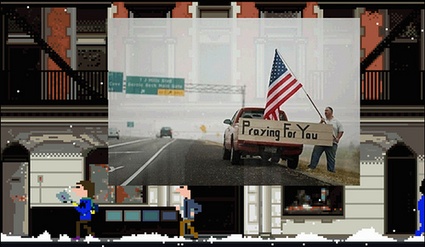 Carlo Zanni, Average Shoveler, 2004 – ongoing
Carlo Zanni, Average Shoveler, 2004 – ongoing
Neoludica is one of the collateral events of the 54. Esposizione Internazionale d’Arte – la Biennale di Venezia. Can you imagine that one day a game artist would be selected to represent a country (Italy maybe?) in one of the national pavilions? How far away are we from that idea?
Well, Cory Arcangel is having an important solo show at the Whitney Museum of American Art. Maybe he is on the good way. But again, he is not a game artist.
More seriously. The art establishment is ruled by old people who still think that videogames are just entertainment for teenagers. The cultural impact of videogames is still far to be broadly recognized by highbrow culture. But it’s just a matter of time. Bill Viola made a videogame recently. The Smithsonian Museum is setting up an impressive exhibition on videogames. Neoludica is just trying to force the process a bit, bringing people together, facilitating dangerous liaisons, etc.
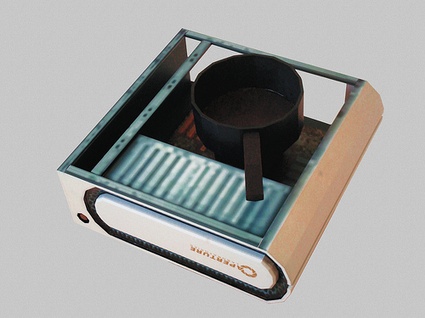 Damiano Colacito, C:\Cook, 2009
Damiano Colacito, C:\Cook, 2009
The exhibition was curated for the first edition of Neoludica. Can you tell us something about Neoludica? For example, is IDIB just part of a broader event? Who is behind that organization?
Italians Do It Better!! is a selection of contemporary artists concerned with the socio-cultural impact of videogames, and sometimes using games as an art medium. It was commissioned as part of Neoludica, a bigger event attempting to explore the relationship between these two terms – “art” and “videogames” – in the broader sense. Can videogames be considered art, and not just entertainment? How many creative practices converge in this innerly multimedia art form? Can videogames change our broader understanding of art? These are some of the questions Neoludica is trying to raise.
The mind behind the event is Debora Ferrari, one of the founders of Musea (the association that co-produced the event), who two years ago organized a big show on concept art in Valle d’Aosta, called The Art of Games. The exhibition puts together many different things, from contemporary art to concept design, from commercial videogames to indie games (the work of Tale of Tales is well represented). Personally, I’m both frightened and excited by this overlapping of different fields and different ideas of art. And if, on the one side, I made my best to work as a gatekeeper, designing the space in order to keep IDIB separated from the rest of the show, at the same time I think that we somewhat need such a broader platform. I’m sure that the Biennale audience will turn its nose up in front of such a mess, where commercial videogames, good craftmanship and contemporary art share the same space. But I’m really interested to see how such a dialogue will help all these cultural forms to evolve in the next years.
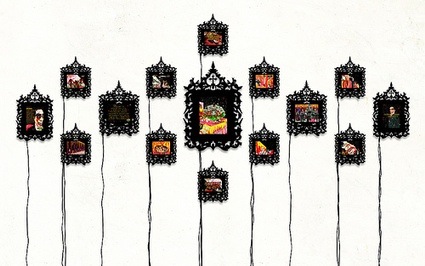 Federico Solmi, Douche Bag City, 2010
Federico Solmi, Douche Bag City, 2010
Any new video game artist, Italian or not, we should keep an eye on?
Let me give you a couple of names. Santa Ragione is a little game factory based in Milan. In IDIB they show their first consistent effort, Fotonica (2011). It is a first person game about jumping, traveling and discovering. You don’t win or lose, you just endlessly explore a metaphysical space made of light lines inspired by abstract paintings and early 3D videogames. It has been released a couple of days before the opening, and I loved to play it at the exhibition.
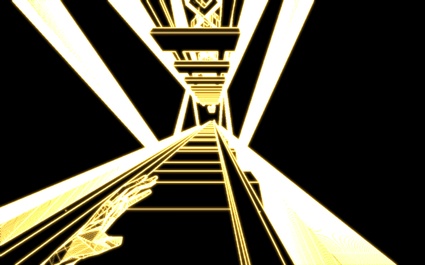 Santa Ragione, Fotonica # 0, 2011
Santa Ragione, Fotonica # 0, 2011
The other work came too late for the show. It is a photographic project by Giovanni Fredi, a former student of mine at the Academia in Milan. He visited two places with a somewhat similar name, but very different nature, and he portrayed people playing videogames. The first place is Kinshasa, capital city of the Democratic Republic of Congo. There, boys play videogames – mainly soccer games for Playstation – all together in self-built game arcades, on found TV screens, using electricity stolen from the street lightings. Akihabara, also known as Akihabara Electric Town, is a major shopping area for electronic, computer, anime, and otaku goods in Tokio, Japan. There, people play everywhere, walking in a bubble inhabited only by themselves and their Nintendo DS. Giovanni followed these gamers, pictured them, and made two nice booklets picturing two different ways of approaching videogames. And, of course, of living in the XXI century. The project is called Kinshasa vs Akihabara (2011). When I saw the project, I sent it to Matteo, who made this nice interview for his Wired.it blog.
 Giovanni Fredi, Kinshasa vs Akihabara
Giovanni Fredi, Kinshasa vs Akihabara
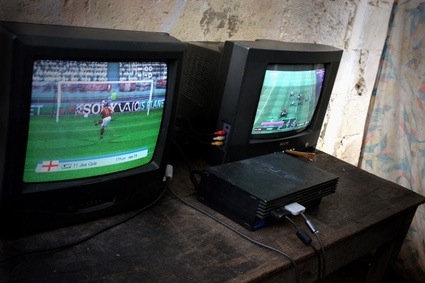 Giovanni Fredi, Kinshasa vs Akihabara
Giovanni Fredi, Kinshasa vs Akihabara
I thought Miltos Manetas was Greek?
Miltos Manetas is a netizen. He was born in Greece, he studied in Italy where he started getting interested in videogames. Than he moved to the States, and the Internet became his core interest. Then again he moved to London and then back to Italy. Currently, he lives in Rome. In an interview that we published in the book we just made with LINK Editions, he says: “I don’t belong to any Nation. I have a Greek, an Italian, an American and also a British in me, but more than anything I am from the Internets. (Internets are realities that exist online as well as in any different territories influenced by the power of the Internet.)”
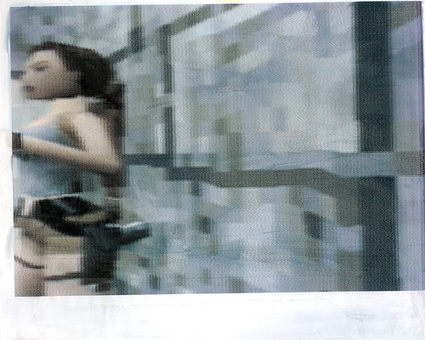 Miltos Manetas, Untitled (Lara Croft), 1998
Miltos Manetas, Untitled (Lara Croft), 1998
Grazie Domenico!
VJ Visualoop, “Italians Do It Better – Biennale di Venezia”, Official trailer, 45″, 2011
Italians Do It Better!!, an exhibition curated by Matteo Bittanti & Domenico Quaranta as part of the NEOLUDICA EVENT – ART IS A GAME 2011-1966 at the 2011 Venice Biennale of Art remains open at Sala dei Laneri, Santa Croce, 131 in Venice until November 27, 2011.
Previously on the Domenico Quaranta channel: Playlist – Playing Games, Music, Art, Playlist, it’s not (just) about nostalgia, Playlist – the physical dimension, KIOSK. Artifacts of a Post-Digital Age, ARCO – Expanded Box and ARCO Beep New Media Art Award.
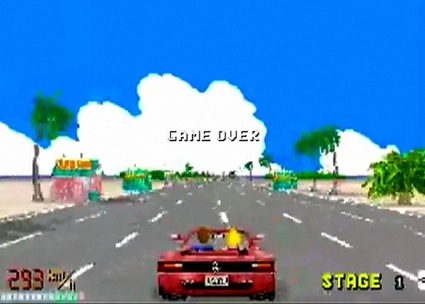 Les Liens Invisibles, The Game Is Over, 2009
Les Liens Invisibles, The Game Is Over, 2009
